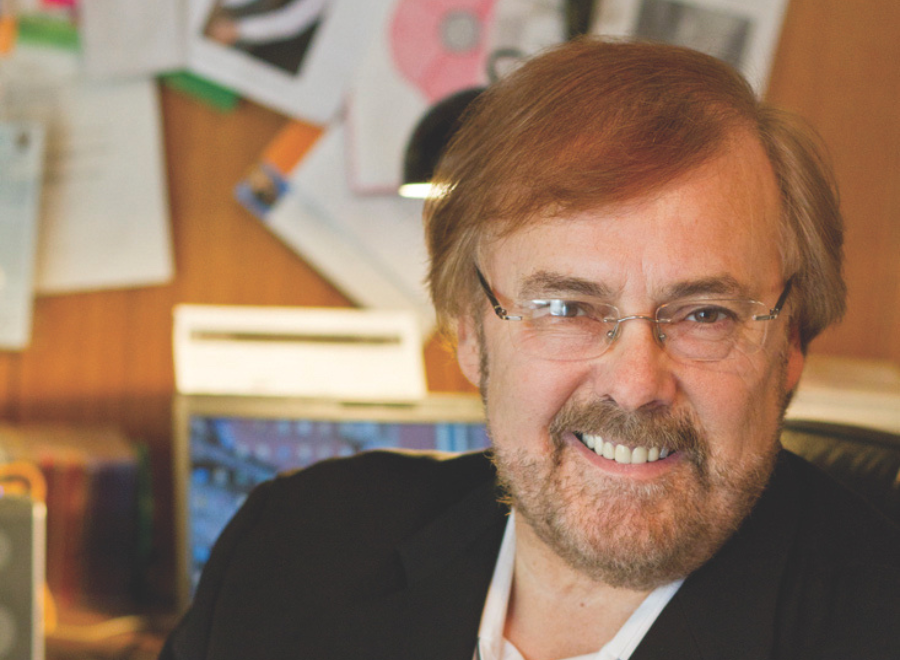A basketball hoop hangs over the garage door of the Wood family’s two-storey home on a quiet residential street in Saskatoon. A minivan is parked in the driveway, and the family cat, Neelix, runs in and out the screen door. From the street, no one would suspect that this 1970s-vintage family home is on the front lines of the fight against domestic violence.
Inside, Bruce Wood sits in a black vinyl chair in his office, a carpeted room with a bay window. On a shelf, among a handful of psychology books, I notice Susan Faludi’s bestseller Stiffed: The Betrayal of the American Man. A drum on the wall reads, “Warriors Against Violence.”
You may unsubscribe from any of our newsletters at any time.
Wood has been working to end violence against women for 30 years. A counsellor, therapist, educator, author and public speaker, he has worked with thousands of men — some who’ve murdered and raped and many who have physically abused women. Seven years ago, he co-founded a pro-feminist men’s resource centre in Saskatoon aimed at helping men become “healthy partners, fathers, role models and community members.”
Typically, family violence is viewed as a women’s issue. Wood sees it differently, and the statistics bear him out. Last spring, Statistics Canada released a report on family violence indicating that there were more than 48,700 cases of spousal abuse reported in 2010. Eighty percent of the victims were women. Though governments have been funding anti-violence initiatives for decades, the numbers have not declined. In Saskatchewan, the rate of spousal abuse has actually increased. For Wood, the message is clear: until men and boys are engaged in the issue, violence against women will continue to be a scourge in Canada.
Wood and I sit before a plate of chocolate cookies and a hot pot of tea. He speaks passionately, sometimes running over his words. “We’re missing an opportunity,” he says. In the days following the release of the Statistics Canada report, Wood diligently read the local and national newspaper coverage. “Not only was there no reference to treatment for men,” says Wood, “but men weren’t even mentioned in most of the stories. It’s very odd, because there’s this thing happening, and it’s happening to women, and who’s doing it? It’s primarily being done to women by men in intimate relationships.”
As a child, Wood lived on the south bank of the St. Lawrence River in Saint-Bruno-de-Montarville, Que. His father worked for the Canadian National Railway and his mother was a homemaker. Both were active in the United Church. The eldest of three boys, Wood remembers his father going away on long trips. “The house would be kind of peaceful,” he recalls.
Soon, Wood noticed a pattern develop. When his father returned, he and his mother and brothers would meet him at the train station. “We’d have a nice dinner together,” he says. But later, he would wake to the sound of his parents yelling and household objects smashing against the wall. The next day, his mother would be wearing sunglasses, trying to hide a black eye.
“One time, it happened right in front of us,” recalls Wood. “My father threw a fork at her, right at the dinner table, and it caught her on her arm.” When Wood was 10 years old, his father collapsed from an aneurysm and died. Some of Wood’s last memories of his father are of him hitting his mother.
Years later, Wood started working with men who assault women. He now admits it was for the wrong reasons. “I wanted to prove that I was different from my father,” he says, “and I wanted to engage in a punitive way with men who behaved the way my father had.”
In the 1980s, while living in Winnipeg, Wood was one of a dozen members of the Men’s Action Collective Against Sexism. Determined to change stereotypical male behaviour, the group humiliated men in porn theatres, spoke at public forums, distributed leaflets and publicly outed male professors who allegedly harassed female students. “We were the pets of the liberal feminist community,” says Wood. “But we didn’t reach many men; we just made ourselves feel better.”
This attitude infiltrated Wood’s therapeutic work. He practised shaming exercises with his male clients, pointing fingers, policing their discussions and pressuring them to reveal the details of their violent acts. Today, Wood shakes his head and sighs at the thought of it.
It took a couple of suicides for Wood to realize that the men he works with aren’t monsters; they’re more similar to him than he wanted to admit. One client killed himself in a mining residence after he realized his abuse had pushed his partner away forever. Another man, full of hope, started a new relationship with a woman only to discover that his feelings of jealousy and anger had returned. He drove his car into an overpass. “They were raised the same way I was,” he says. “They were exposed to the same influences I have been.”
Wood discovered that he actually liked and cared about his clients. “They all know what they’re doing is wrong. They’re deeply ashamed of it, but they feel stuck about what to do about it, and have retained this idea, as part of the masculine ethic, that if you’ve got a problem, you should be able to dig your way out of it.”
On a snowy November night two years ago, the employees of a trucking company gathered in the basement of the Royal Canadian Legion in Saskatoon and listened to Wood speak about men’s role in ending violence against women. Wood sat before dozens of truckers and their partners with his hands on his knees and his palms face up — an approach he’s been using since the 1990s to visually indicate openness to, and respect for, the men he addresses. Recently, Wood has started reaching out to men who wouldn’t typically hear his message by going to the places they frequent. Last year, he addressed a professional sports team about hazing, relationship violence and jealousy.
“We need to start talking to men,” he says. Of the 200 anti-violent treatment programs for men in Canada, the overwhelming majority address violence and abuse after it has already taken place. Wood wants to see more preventative measures, including community leaders compassionately engaging men in order to encourage peer-to-peer education. “I don’t think churches have found that middle place between understanding that this is not the woman’s fault and figuring out a way that the men can be invited to change,” he says.
There was a time when the Christian church either kept silent on domestic abuse or counselled women to stay in toxic marriages in order to preserve the sanctity of the family. In the 1960s, the United Church recognized divorce as necessary to protect the well-being of individual family members.
But it was not until the 1980s that the United Church acknowledged how the church itself fostered sexism, says Tracey Trothen, the author of Linking Sexuality and Gender: Naming Violence Against Women in the United Church of Canada.
“There’s still that strong sense of ‘not in my church, not in my family, not in my community, not in my sports team,’” says Trothen. “But it is there. That’s not something that’s going to shift quickly at a grassroots level; it’s something that we need to keep making space for.”
In one corner of Wood’s office hangs a framed print of a young man steering a ship with Jesus hovering above, pointing him in the right direction. The picture, Christ Our Pilot, was a gift from the United Church to Wood’s father for his involvement with youth. Wood encourages church leaders to engage men so they feel comfortable enough to speak intimately. If they’re preached at, made to feel ashamed, they may never return, he says.
When he thinks of his own father, he says, “I wonder if he’d still been alive, and I proceeded with this work, if there wouldn’t have come a point where we would have sat down and some of the roles might have been reversed. No one taught him how to be a father, and I don’t know who modelled for him how to be a man. I like to think that he would have thought this work was of value.”
***
This story first appeared in The United Church Observer’s January 2013 issue with the title “Manning up.”














